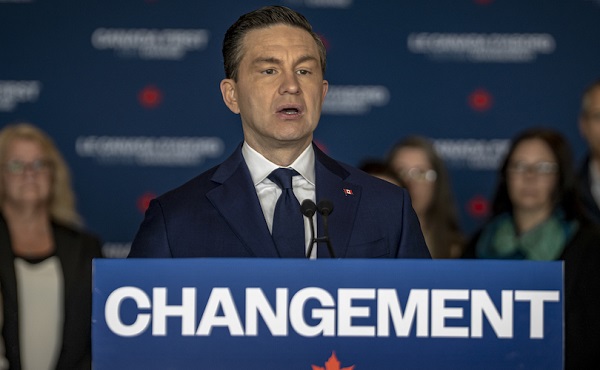Alberta
Alberta government must restrain spending in upcoming budget to avoid red ink

From the Fraser Institute
By Tegan Hill and Milagros Palacios
Whether due to U.S. tariffs or lower-than-expected oil prices, the Smith government has repeatedly warned Albertans that despite a $4.6 billion projected budget surplus in 2024/25, Alberta could soon be in the red. To help avoid this fate, the Smith government must restrain spending in its upcoming 2025 budget.
These are not simply numbers on a page; budget deficits have real consequences for Albertans. For one, deficits fuel debt accumulation. And just as Albertans must pay interest on their own mortgages or car loans, taxpayers must pay interest on government debt. Each dollar spent paying interest is a dollar diverted from programs such as health care and education, or potential tax relief. This fiscal year, provincial government debt interest costs will reach a projected $650 per Albertan.
And while many risk factors are out of the government’s direct control, the government can control its own spending.
In its 2023 budget, the Smith government committed to keep the rate of spending growth to below the rate of inflation and population growth. This was an important step forward after decades of successive governments substantially increasing spending during good times—when resource revenues (including oil and gas royalties) were relatively high (as they are today)—but failing to rein in spending when resource revenue inevitably declined.
But here’s the problem. Even if the Smith government sticks to this commitment, it may still fall into deficit. Why? Because this government has spent significantly more than it originally planned in its 2022 mid-year plan (the Smith government’s first fiscal update). In other words, the government’s “restraint” is starting from a significantly higher base level of spending. For example, this fiscal year it will spend $8.2 billion more than it originally planned in its 2022 mid-year plan. And inflation and population growth only account for $3.1 billion of this additional spending. In other words, $5.1 billion of this new spending is unrelated to offsetting higher prices or Alberta’s growing population.
Because of this higher spending and reliance on volatile resource revenue, red ink looms.
Indeed, while the Smith government projects budget surpluses over the next three fiscal years, fuelled by historically high resource revenue, if resource revenue was at its average of the last two decades, this year’s $4.6 billion projected budget surplus would turn into a $5.8 billion deficit. And projected budget surpluses in 2025/26 and 2026/27 would flip to budget deficits. To be clear, this is not a far-fetched scenario—resource revenue plummeted by nearly 70 per cent in 2015/16.
In contrast, if resource revenue fell to its average (again, based on the last two decades) but the Smith government held to its original 2022 spending plan, Alberta would still have a balanced budget in 2026/27.
Bottom line; had the Smith government not substantially increased spending over the last two years, Alberta’s spending levels today would align with more stable ongoing levels of revenue, which would put Alberta on more stable fiscal footing in the years to come.
Premier Smith has warned Albertans a budget deficit may be on the way. To mitigate the risk of red ink moving forward, the Smith government should show real spending restraint in its 2025 budget.
Alberta
Low oil prices could have big consequences for Alberta’s finances

From the Fraser Institute
By Tegan Hill
Amid the tariff war, the price of West Texas Intermediate oil—a common benchmark—recently dropped below US$60 per barrel. Given every $1 drop in oil prices is an estimated $750 million hit to provincial revenues, if oil prices remain low for long, there could be big implications for Alberta’s budget.
The Smith government already projects a $5.2 billion budget deficit in 2025/26 with continued deficits over the following two years. This year’s deficit is based on oil prices averaging US$68.00 per barrel. While the budget does include a $4 billion “contingency” for unforeseen events, given the economic and fiscal impact of Trump’s tariffs, it could quickly be eaten up.
Budget deficits come with costs for Albertans, who will already pay a projected $600 each in provincial government debt interest in 2025/26. That’s money that could have gone towards health care and education, or even tax relief.
Unfortunately, this is all part of the resource revenue rollercoaster that’s are all too familiar to Albertans.
Resource revenue (including oil and gas royalties) is inherently volatile. In the last 10 years alone, it has been as high as $25.2 billion in 2022/23 and as low as $2.8 billion in 2015/16. The provincial government typically enjoys budget surpluses—and increases government spending—when oil prices and resource revenue is relatively high, but is thrown into deficits when resource revenues inevitably fall.
Fortunately, the Smith government can mitigate this volatility.
The key is limiting the level of resource revenue included in the budget to a set stable amount. Any resource revenue above that stable amount is automatically saved in a rainy-day fund to be withdrawn to maintain that stable amount in the budget during years of relatively low resource revenue. The logic is simple: save during the good times so you can weather the storm during bad times.
Indeed, if the Smith government had created a rainy-day account in 2023, for example, it could have already built up a sizeable fund to help stabilize the budget when resource revenue declines. While the Smith government has deposited some money in the Heritage Fund in recent years, it has not created a dedicated rainy-day account or introduced a similar mechanism to help stabilize provincial finances.
Limiting the amount of resource revenue in the budget, particularly during times of relatively high resource revenue, also tempers demand for higher spending, which is only fiscally sustainable with permanently high resource revenues. In other words, if the government creates a rainy-day account, spending would become more closely align with stable ongoing levels of revenue.
And it’s not too late. To end the boom-bust cycle and finally help stabilize provincial finances, the Smith government should create a rainy-day account.
Alberta
Governments in Alberta should spur homebuilding amid population explosion

From the Fraser Institute
By Tegan Hill and Austin Thompson
In 2024, construction started on 47,827 housing units—the most since 48,336 units in 2007 when population growth was less than half of what it was in 2024.
Alberta has long been viewed as an oasis in Canada’s overheated housing market—a refuge for Canadians priced out of high-cost centres such as Vancouver and Toronto. But the oasis is starting to dry up. House prices and rents in the province have spiked by about one-third since the start of the pandemic. According to a recent Maru poll, more than 70 per cent of Calgarians and Edmontonians doubt they will ever be able to afford a home in their city. Which raises the question: how much longer can this go on?
Alberta’s housing affordability problem reflects a simple reality—not enough homes have been built to accommodate the province’s growing population. The result? More Albertans competing for the same homes and rental units, pushing prices higher.
Population growth has always been volatile in Alberta, but the recent surge, fuelled by record levels of immigration, is unprecedented. Alberta has set new population growth records every year since 2022, culminating in the largest-ever increase of 186,704 new residents in 2024—nearly 70 per cent more than the largest pre-pandemic increase in 2013.
Homebuilding has increased, but not enough to keep pace with the rise in population. In 2024, construction started on 47,827 housing units—the most since 48,336 units in 2007 when population growth was less than half of what it was in 2024.
Moreover, from 1972 to 2019, Alberta added 2.1 new residents (on average) for every housing unit started compared to 3.9 new residents for every housing unit started in 2024. Put differently, today nearly twice as many new residents are potentially competing for each new home compared to historical norms.
While Alberta attracts more Canadians from other provinces than any other province, federal immigration and residency policies drive Alberta’s population growth. So while the provincial government has little control over its population growth, provincial and municipal governments can affect the pace of homebuilding.
For example, recent provincial amendments to the city charters in Calgary and Edmonton have helped standardize building codes, which should minimize cost and complexity for builders who operate across different jurisdictions. Municipal zoning reforms in Calgary, Edmonton and Red Deer have made it easier to build higher-density housing, and Lethbridge and Medicine Hat may soon follow suit. These changes should make it easier and faster to build homes, helping Alberta maintain some of the least restrictive building rules and quickest approval timelines in Canada.
There is, however, room for improvement. Policymakers at both the provincial and municipal level should streamline rules for building, reduce regulatory uncertainty and development costs, and shorten timelines for permit approvals. Calgary, for instance, imposes fees on developers to fund a wide array of public infrastructure—including roads, sewers, libraries, even buses—while Edmonton currently only imposes fees to fund the construction of new firehalls.
It’s difficult to say how long Alberta’s housing affordability woes will endure, but the situation is unlikely to improve unless homebuilding increases, spurred by government policies that facilitate more development.
-

 Alberta22 hours ago
Alberta22 hours agoGovernments in Alberta should spur homebuilding amid population explosion
-

 2025 Federal Election2 days ago
2025 Federal Election2 days agoPoilievre Campaigning To Build A Canadian Economic Fortress
-

 Automotive2 days ago
Automotive2 days agoCanadians’ Interest in Buying an EV Falls for Third Year in a Row
-

 armed forces1 day ago
armed forces1 day agoYet another struggling soldier says Veteran Affairs Canada offered him euthanasia
-

 conflict1 day ago
conflict1 day agoWhy are the globalists so opposed to Trump’s efforts to make peace in Ukraine?
-

 2025 Federal Election1 day ago
2025 Federal Election1 day agoCarney’s budget is worse than Trudeau’s
-

 International21 hours ago
International21 hours agoHistory in the making? Trump, Zelensky hold meeting about Ukraine war in Vatican ahead of Francis’ funeral
-

 Alberta20 hours ago
Alberta20 hours agoLow oil prices could have big consequences for Alberta’s finances










